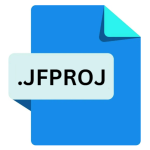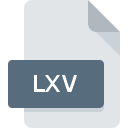.EEGF File Extension

EEGF Ransomware Encrypted File
| Developer | N/A |
| Popularity | |
| Category | Encoded Files |
| Format | .EEGF |
| Cross Platform | Update Soon |
What is an EEGF file?
The .EEGF file extension is synonymous with encrypted files targeted by the EEGF ransomware strain.
When this ransomware infiltrates a system, it encrypts the victim’s files, appending the .EEGF extension to each affected file.
This encryption renders the files inaccessible to the victim without the decryption key, effectively holding them hostage until a ransom is paid.
More Information.
The history of EEGF ransomware is shrouded in clandestine activities and malicious intent. It likely emerged as a tool for cyber extortion, designed to infiltrate systems, encrypt valuable files, and demand ransom payments from victims in exchange for decryption keys.
The initial purpose of EEGF, like other ransomware strains, was to monetize cybercrime through coercion and extortion.
Origin Of This File.
The origin of EEGF ransomware can be traced back to the murky depths of the dark web, where cybercriminals operate with impunity.
Like many ransomware variants, EEGF likely originated from underground forums or clandestine hacker communities, where malicious actors exchange tools, techniques, and even source code for crafting such malware.
File Structure Technical Specification.
The technical underpinnings of EEGF encrypted files are complex, involving sophisticated encryption algorithms designed to thwart attempts at decryption without the requisite key.
While specific details regarding the encryption methods employed by EEGF ransomware remain obscure, it is believed to utilize robust cryptographic techniques to secure the victim’s files effectively.
How to Convert the File?
Converting EEGF encrypted files back to their original format is a daunting task due to the complex encryption algorithms employed by EEGF ransomware. Typically, conversion involves decrypting the files using the corresponding decryption key.
Since obtaining the decryption key usually requires paying a ransom to the cybercriminals responsible for the attack, it’s important to exhaust alternative methods before considering this option.
Here are some potential steps to attempt file conversion:
- Check for Backups: Before attempting any conversion methods, check if you have backups of the encrypted files. If you regularly backup your data to an external hard drive, cloud storage service, or another location, you may be able to restore the unencrypted versions of your files from these backups.
- Use Data Recovery Software: In some cases, data recovery software may be able to recover deleted or corrupted files, including those encrypted by ransomware like EEGF. While this method is not guaranteed to work, it’s worth trying, especially if you don’t have backups available.
- Consult with Cybersecurity Experts: Reach out to cybersecurity professionals or organizations that specialize in ransomware recovery. They may have tools or techniques that can help decrypt EEGF encrypted files without paying the ransom. However, be cautious and ensure that you’re working with reputable experts to avoid falling victim to further scams.
- Explore Decryption Tools: Occasionally, cybersecurity researchers or law enforcement agencies release decryption tools for certain ransomware variants, including EEGF. Keep an eye on reputable cybersecurity news sources and forums for any announcements about decryption tools that may be available for EEGF ransomware.
- Consider Paying the Ransom: As a last resort, you may consider paying the ransom to obtain the decryption key. However, this option should be approached with extreme caution, as there’s no guarantee that the cybercriminals will provide the decryption key or that it will work properly. Additionally, paying the ransom only fuels further criminal activities and contributes to the proliferation of ransomware.
Advantages And Disadvantages.
Advantages:
- Strong Encryption: EEGF ransomware employs advanced encryption algorithms, making it challenging to decrypt files without the corresponding key.
- Monetization: For cybercriminals, EEGF presents a lucrative opportunity to extort ransom payments from victims in exchange for decrypting their files.
- Stealthy Operation: EEGF ransomware operates stealthily, often evading detection by traditional antivirus software until it has already encrypted the victim’s files.
Disadvantages:
- Data Loss: Victims of EEGF ransomware face the risk of permanent data loss if they are unable or unwilling to pay the ransom demanded by cybercriminals.
- Financial Impact: Ransom payments demanded by EEGF operators can impose a significant financial burden on individuals and organizations, with no guarantee of file recovery.
- Reputation Damage: Organizations that fall victim to ransomware attacks, such as EEGF, may suffer reputational damage and loss of customer trust due to perceived security vulnerabilities.
How to Open EEGF?
Open In Windows
- Attempt to open the encrypted file by double-clicking on it. However, since the file is encrypted, it will likely prompt an error message indicating that the file is inaccessible.
- If you have obtained the decryption key, use decryption software compatible with Windows to decrypt the file. Follow the instructions provided by the decryption tool to decrypt the file successfully.
Open In Linux
- On Linux systems, attempting to open an EEGF encrypted file will result in similar error messages due to the file’s encryption.
- If you possess the decryption key, look for decryption tools that are compatible with Linux systems. Follow the instructions provided by the decryption tool to decrypt the file on your Linux system.
Open In MAC
- Similar to Windows, attempt to open the encrypted file by double-clicking on it. Expect to encounter an error message due to the file’s encryption.
- If you have the decryption key, use decryption software compatible with MacOS to decrypt the file. Ensure that the decryption tool you choose is compatible with MacOS and follow the provided instructions carefully.













